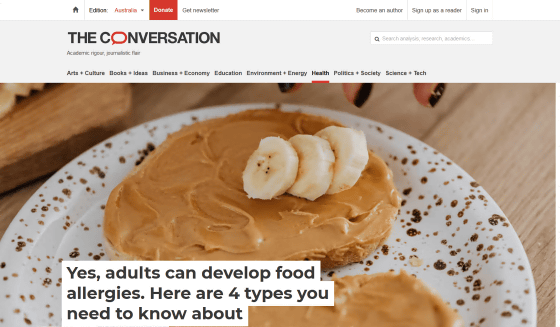Why do some people develop food allergies as adults?

Yes, adults can develop food allergies. Here are 4 types you need to know about
https://theconversation.com/yes-adults-can-develop-food-allergies-here-are-4-types-you-need-to-know-about-223342

In general, preschoolers are four times more likely to have a food allergy than adults, and food allergies tend to disappear as children get older. However, the National Allergy Council of Australia still reports that one in 50 adults has a food allergy, and some people develop food allergies in adulthood.
Collins explains that food allergies are 'an immune response that involves immunoglobulin E (IgE), the central antibody that causes allergic reactions. These are known as IgE-mediated food allergies.' Food allergy symptoms include hives, swelling of the throat, difficulty swallowing, vomiting, difficulty breathing, tightness in the throat and chest, chest pain, increased heart rate, dizziness, low blood pressure, and anaphylaxis . These symptoms can be life-threatening, so people with food allergies should consult with their doctor to develop a behavioral management plan.

Collins describes four types of IgE-mediated food allergies that can occur in adults:
◆1: Single food allergy
A 2019
Collins said, 'Overall, the prevalence of food allergies in adults appears to be increasing. Previous studies published in 2003 and 2004 showed that the prevalence of peanut allergies has increased by about three times to 0.6%, tree nut and fish allergies have increased by about two times from 0.5% each, and shellfish has also increased from 2.5%.' He also said that the proportion of childhood food allergies that continue into adulthood is increasing. The reasons for this include ' vitamin D deficiency,' 'immune system problems due to excessive cleanliness,' 'enhanced reactions due to excessive avoidance of allergens,' and 'increased use of antibiotics.'

◆2: Meat allergy caused by tick bites
It may seem surprising, but there are cases where being bitten by a tick can cause an allergic reaction to red meat, etc. The cause is a carbohydrate called ' galactose-α-1,3-galactose (α-gal) ' contained in the tick's saliva.
α-gal is found in the proteins of many mammals, except primates. When a person is bitten by a tick, antibodies against α-gal are produced in the body, and when that person consumes red meat, dairy products, or sweets or supplements containing gelatin derived from animals, an allergic reaction occurs. The Centers for Disease Control and Prevention (CDC) warns that if the habitat of ticks that contain α-gal in their saliva expands in the United States, the number of people with red meat allergies may increase.
More than 400,000 Americans may have a red meat allergy due to tick bites - GIGAZINE

◆3: Fruit pollen allergy
Fruit-pollen allergy is an oral allergy syndrome in which food induces a hypersensitive reaction in the oral cavity and is associated with hay fever. People with hay fever produce IgE antibodies against antigens in pollen that are similar to those found in some fruits, vegetables, and herbs. As a result, eating these plants causes an allergic reaction.
Pollen that is likely to cause fruit pollen allergies includes birch, cypress, cedar, and ragweed. Foods that are likely to cause an allergic reaction in the oral cavity include kiwi, banana, mango, avocado, grapes, celery, carrots, potatoes, coriander, pepper, and paprika. The prevalence is not very high, and in mild cases symptoms are limited to itching of the mouth and throat, but in some cases anaphylaxis can occur and be life-threatening.

◆4: Food-dependent exercise-induced anaphylaxis
During intense exercise, stomach acid is reduced and intestinal permeability is increased, making it easier for food molecules that cause IgE-mediated food allergies to enter the bloodstream. If you have a food allergy to the food you ate before exercising, you are more likely to experience a severe allergic reaction such as hives, difficulty breathing, and anaphylaxis. This is called
Common foods that trigger food-dependent exercise-induced anaphylaxis include wheat, seafood, meat, eggs, milk, nuts, grapes, and celery, but sometimes foods eaten a few hours before exercise can be the trigger. Other factors that can contribute to the severity of the condition include taking nonsteroidal inflammatory drugs, drinking alcohol, and lack of sleep.

'Food allergies in adults need to be taken seriously and those with severe symptoms should wear a medical information bracelet or chain and carry an EpiPen (an epinephrine autoinjector) . Alarmingly, research shows only one in four adults with food allergies owns an EpiPen,' Ms Collins said.
Related Posts:






